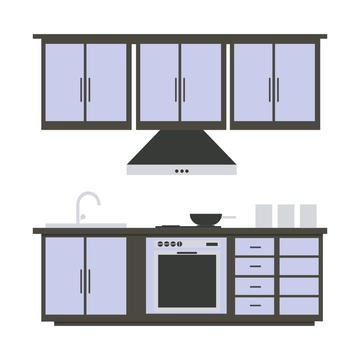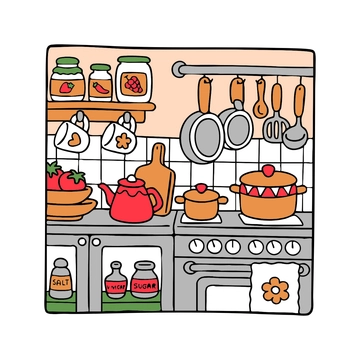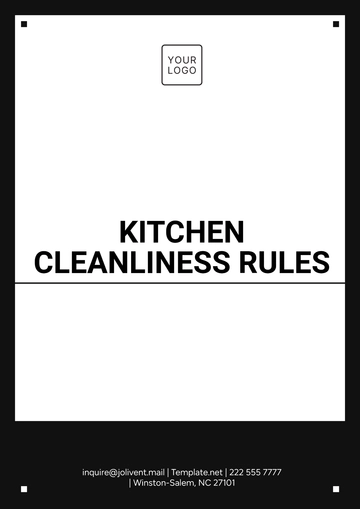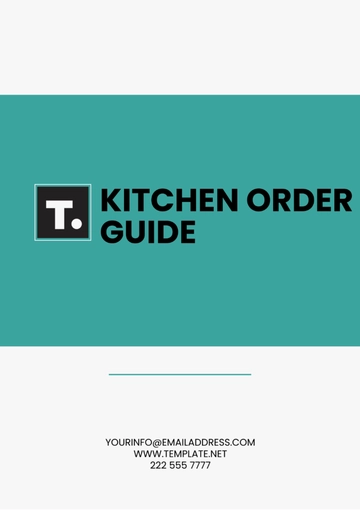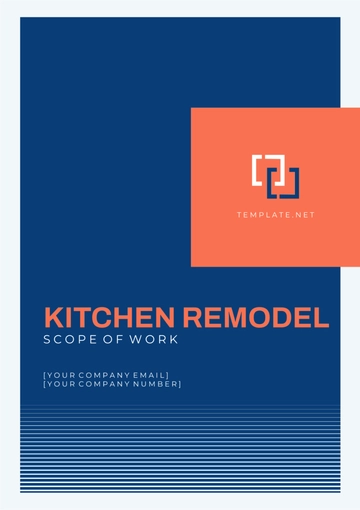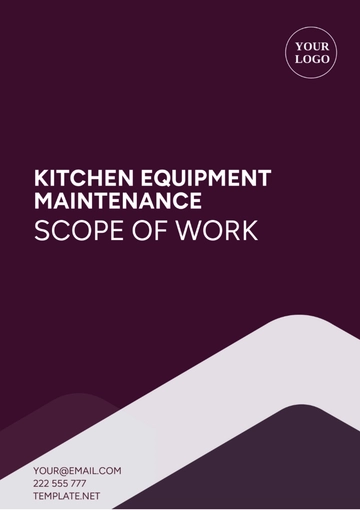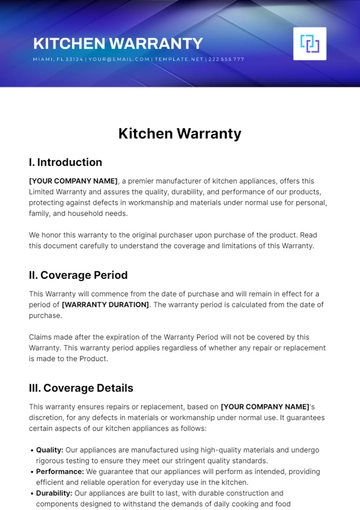Free Kitchen Remodel Scope Of Work
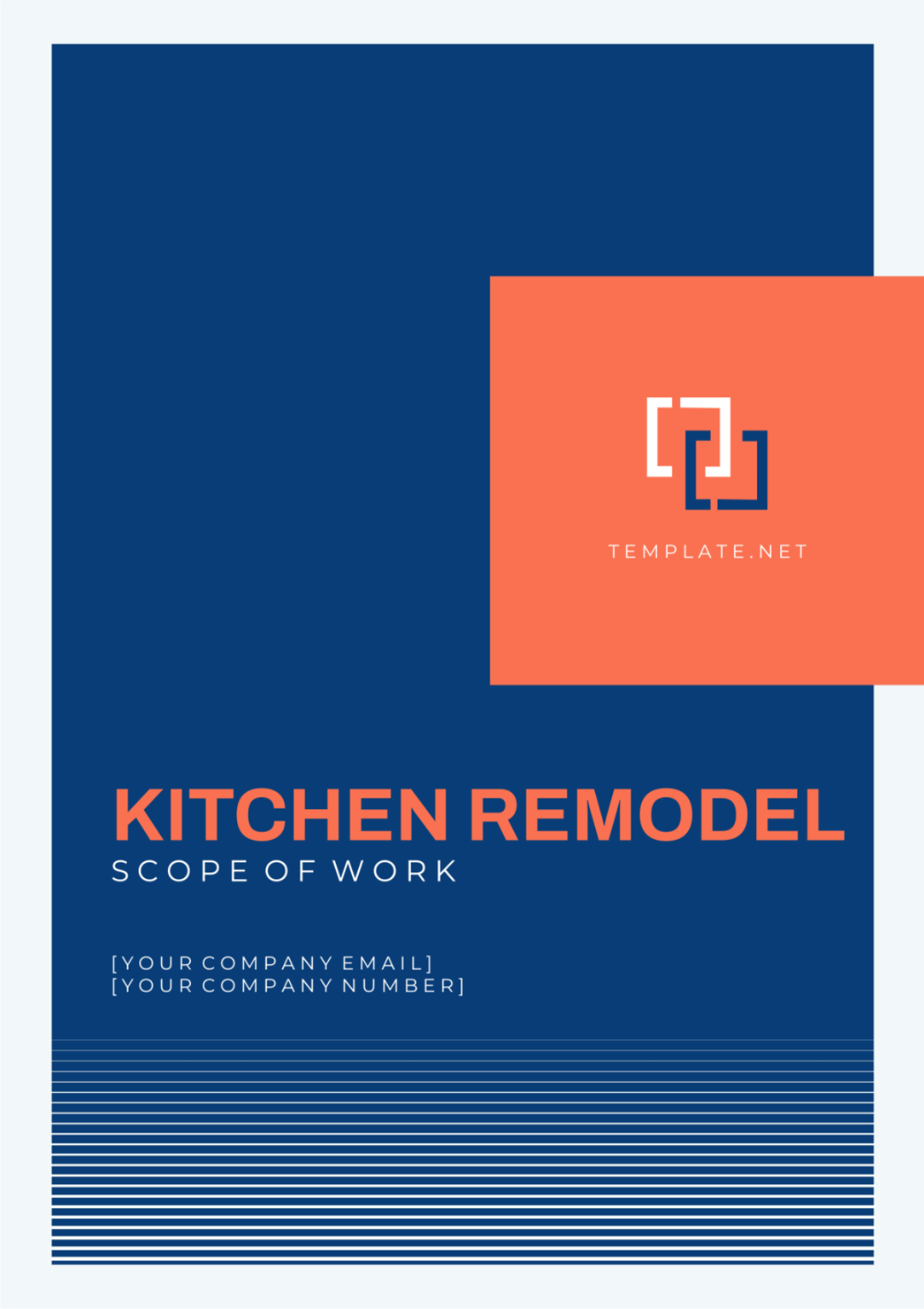
I. Project Overview
This document outlines the kitchen remodel project to be completed at [YOUR HOME ADDRESS] under [YOUR COMPANY NAME]. [YOUR NAME], the Project Manager, will oversee the project, scheduled to start on [PROJECT START DATE] and end by [PROJECT END DATE].
II. Demolition and Preparation
Demolition: Remove existing cabinets, countertops, and flooring.
Electrical and Plumbing: Assess and update lines to accommodate the new layout.
III. Installation and Construction
Task | Description | Contractor |
|---|---|---|
Cabinets | Install new cabinets as per the approved design plan | [CABINET CONTRACTOR] |
Countertops | Fabricate and install chosen material for countertops | [COUNTERTOP SUPPLIER] |
Flooring | Replace with [Flooring Material] | [FLOORING CONTRACTOR] |
Appliances | Install and test new appliances | - |
Painting | Paint walls and ceiling per the selected color scheme | [PAINTING CONTRACTOR] |
IV. Finishes and Final Touches
Task | Description | Contractor |
|---|---|---|
Hardware Installation | Provide and install cabinet handles and knobs | [HARDWARE SUPPLIER] |
Lighting Update | Update fixtures for enhanced aesthetic | [LIGHTING CONTRACTOR] |
Backsplash Installation | Install selected material for backsplash | [BACKSPLASH CONTRACTOR] |
Final Inspection | Conduct walkthrough to ensure work meets quality standards before sign-off | - |
V. Timeline and Deliverables
Project Phase | Timeline |
|---|---|
Demolition Phase | [START DATE] - [END DATE] |
Construction Phase | [START DATE] - [END DATE] |
Finishing Phase | [START DATE] - [END DATE] |
Final Inspection | [START DATE] |
VI. Quality Assurance
Make sure that all the deliverables related to the project meet or exceed the quality standards that have been set as a requirement.
Ensure regular execution of reviews aimed at assessing the quality and regular implementation of testing procedures.
To ensure consistent quality throughout the entire lifecycle of the project, it is crucial to actively seek and solicit feedback and input from key stakeholders.
VII. Change Management
|
|
|
VIII. Risk Management
Potential Risks | Mitigation Strategies | Management Protocols |
|---|---|---|
Budget Overruns | Thoroughly estimate costs, set aside contingency funds. | Regular budget reviews, tracking expenses. |
Timeline Delays | Develop realistic schedules, identify critical paths. | Regular progress monitoring, proactive adjustments. |
Resource Shortages | Plan resource allocation in advance, have backup plans. | Regular resource assessments, cross-training. |
Scope Creep | Clearly define project scope, obtain sign-offs. | Regular scope reviews, change control process. |
External Factors | Identify potential external risks, such as weather or market changes. | Stay informed, have contingency plans in place. |
IX. Communication Plan
Communication Guidelines | Description |
|---|---|
Clear Communication Channels | Establish designated channels such as email, meetings, or project management software for communication. |
Frequency of Updates | Determine how often updates will be provided (e.g., weekly meetings, daily emails, bi-weekly reports). |
Effective Communication | Encourage open communication among all project stakeholders and address any communication barriers promptly. |
X. Completion and Handover
Conduct a final inspection to ensure all work meets quality standards.
Prepare documentation of the project completion, including before-and-after photos and warranty information.
Hand over the completed project to the client and obtain their sign-off on the scope of work.
SIGNATURE

[YOUR NAME]
[YOUR COMPANY NAME]
- 100% Customizable, free editor
- Access 1 Million+ Templates, photo’s & graphics
- Download or share as a template
- Click and replace photos, graphics, text, backgrounds
- Resize, crop, AI write & more
- Access advanced editor
Revamp your kitchen effortlessly with Template.net's Kitchen Remodel Scope of Work Template. This editable and customizable document streamlines your renovation process. Tailor it to your needs effortlessly using our AI Editor Tool. Elevate your project management game and ensure a seamless transformation. Get started today!




